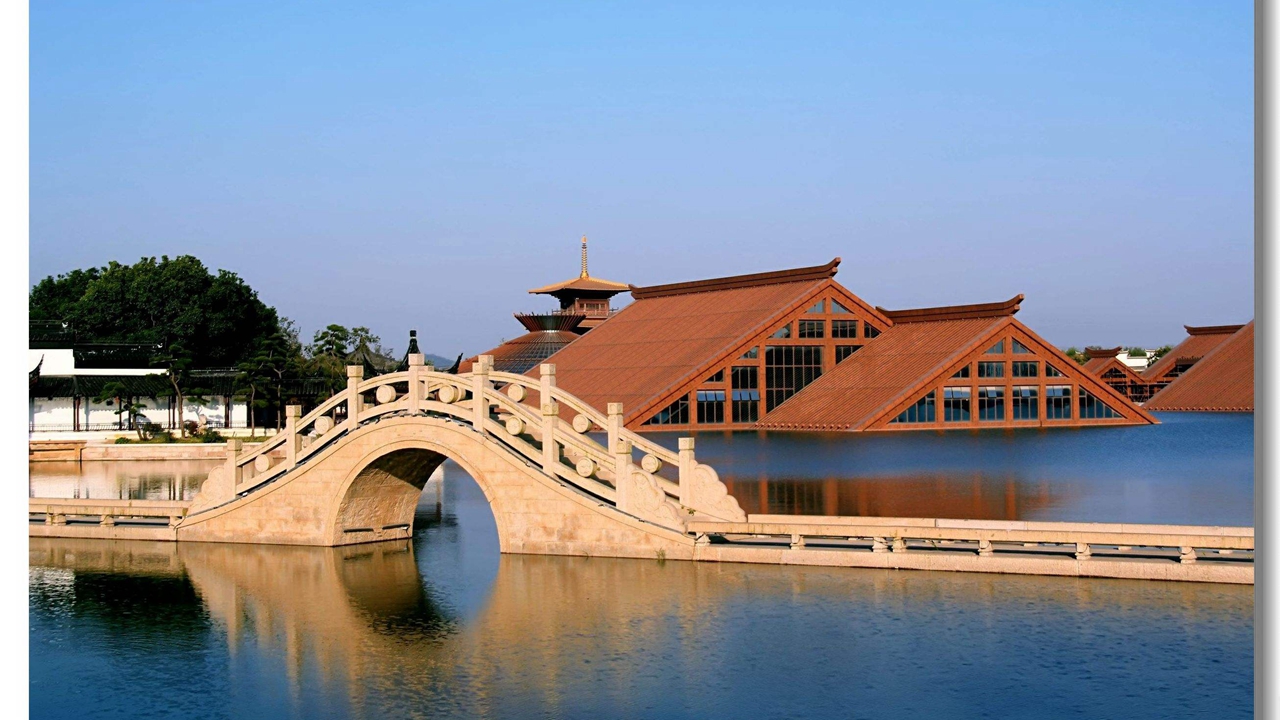VOICES | The Guangfulin Site of Ancient Culture Travels
Press Contact
SISU News Center, Office of Communications and Public Affairs
Tel : +86 (21) 3537 2378
Email : news@shisu.edu.cn
Address :550 Dalian Road (W), Shanghai 200083, China
Further Reading
VOICES | The Guangfulin Site of Ancient Culture Travels
06 September 2021 | By Zhang Shijia | Copyedited by Zhao Yinfen
|
I |
never thought that in Songjiang University Town, there would be a treasure trove of Shanghai's civilization and stage for displaying traditional culture. However, eventually here it is.
After a fifteen-minute drive from Shanghai International Studies University (Songjiang campus), I was taken to the Guangfulin site of ancient culture, which opened in April this year. On this beautiful and crisp autumn day, the site welcomes queues of tourists.
Passing a cluster of Hui-style architecture, which features white walls and black tiles, the crowd flowed slowly to the "big roof" — Guangfulin cultural exhibition hall that is floating on the rippling Fulin lake. Seen from a distance, it looks a bit like a wooden pyramid. Upon entering the exhibition hall, I found the entire exhibition space submerged in water. What firstly catched my eye was the carved stone wall covered with broze yellow light. I was absorbed in reading the engraved introduction of the exhibition hall on the wall, forgetting the much cooler air. A journey through time and space to find the roots of Shanghai seemed to start, but out of my expectations, then came a crew of wax statues that was a revision to the excavation site and to guide visitors into the window in time. From a primitive form of life to fishing, hunting and farming, this long period of time laid the groundwork for the production of a fishing tool called "Hu" and the breeding of a Shanghai school traditional culture. With the appearance of red-lacquered doors and big red lanterns of the rich, the ancient style and charm on the screen gradually gathered around me. I met a block of stores that sell silk and satin, rice and flour, boil water from big stoves, Chinese medicine and Western medicine and so on. I saw the life condition of people living at that time as if they were really alive. I smelt the air filled with flavors of oil, salt and pepper of the market. I listened to the music and singing of Shanghai style opera named Shen Qu and Tan Huang. Looking at these wax figures, I believed that they were living their own lives that enshrined the memory of Shanghai. Forward, as time went by, I walked through a section of dark green iron suitcase, and then trolley, mailbox, peep glass and theatre popped up into my sight. With the display of radios and televisions in the windows as well as the advertisements and posters on the wall, I was reminded of the history of Shanghai that was raging like a storm cloud.
This was near the end of the exhibition hall and the journey to find the roots of Shanghai either, but not the end of the charming Guangfulin site. When I took the elevator back to the ground, I heard a peal of drums coming from afar. What is it?
Out of the exhibition hall came the drums clearer and clearer. I strolled along the stone bridge corridor, looking for the sound. A huge red billboard, standing on the edge of a yawn, says that there is an exhibition of the traditional culture of China on the nearby square. The square serves as a stage for displaying and exchanging the traditional culture of China. Once again, it made me surprised that the participants of these activities were mostly primary and middle school students from Songjiang district. Taking a school as a unit, they showed one or two folk cultures in their stalls. Drum is one of the most common performances, but each group has his own distinctive characteristics. The Chinese drum performance with accompaniment was exactly what came to my ears earlier. The performers were three high-grade girl pupils. They were dressed in long-sleeved shirts with golden closure and red sleeveless gowns with golden dragons and phoenixes embroidered on the front side. They faced tourists and audience, poised and dignified. With slight tremble of their faces, they were always keeping their drumbeat identical. As far as I am concerned, their mental outlook resembled three red-blooded Chinese dragons that narrated an ancient Chinese myth and enjoyed themselves in the sky. I could not help applauding for them. In addition to the Chinese drum, there was another performance that had even been lost for decades. It was the performance of mixed fine gongs and drums. Its performers were younger pupils, dressed in red robes. Each of them took on various roles and also won warm welcome. What’s more, accompanied by percussion, groups of junior pupils dressed in the Pre-Qin Period style chanted pieces of the Book of Songs. Their chant flowed into a nearby quiet stall in which four students from middle school were performing paper-rolling. While scrolling the paper, they were not disturbed by others at all, and their works, the mixture of paper mosaic were extremely marvelous. Next to the students rolling paper, there sat a girl making a dreamcatcher. She was elaborately combing colorful cotton strings with a wooden comb, making me feel that the world quieted down, like a sweet dream.
Sauntering among the stage full of exhibits of the traditional culture of China, I can always find absolutely new and thrilling items. It is a pity that I only had one afternoon to enjoy them. On my return trip, I realized that my perception of Shanghai had changed. For a long time, I was under a misleading concept that the flourishment of Shanghai was just a matter of entering modern times, and the Shanghai school traditional culture had already been shelved and neglected. Obviously, I was wrong, but fortunately, a one-day tour to the Guangfulin site of ancient culture has made me realize my mistake and showed me the profound historical civilization of Shanghai and the traditional culture handed down from generation to generation.
Press Contact
SISU News Center, Office of Communications and Public Affairs
Tel : +86 (21) 3537 2378
Email : news@shisu.edu.cn
Address :550 Dalian Road (W), Shanghai 200083, China




